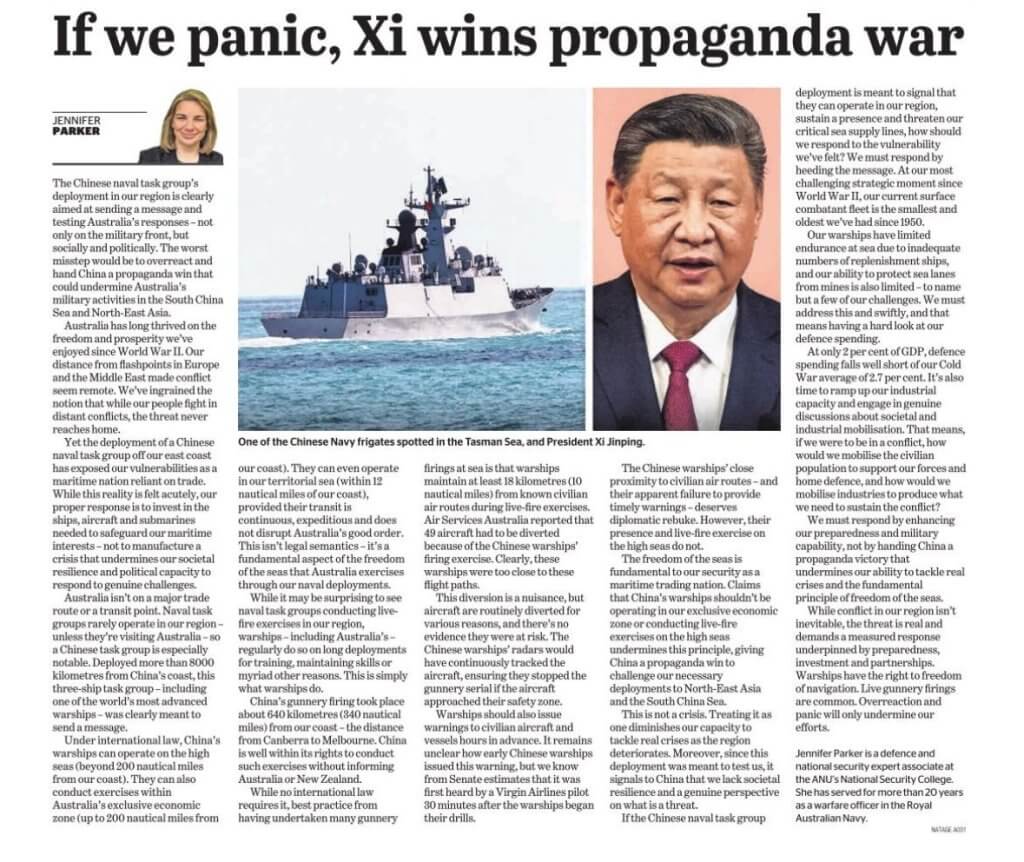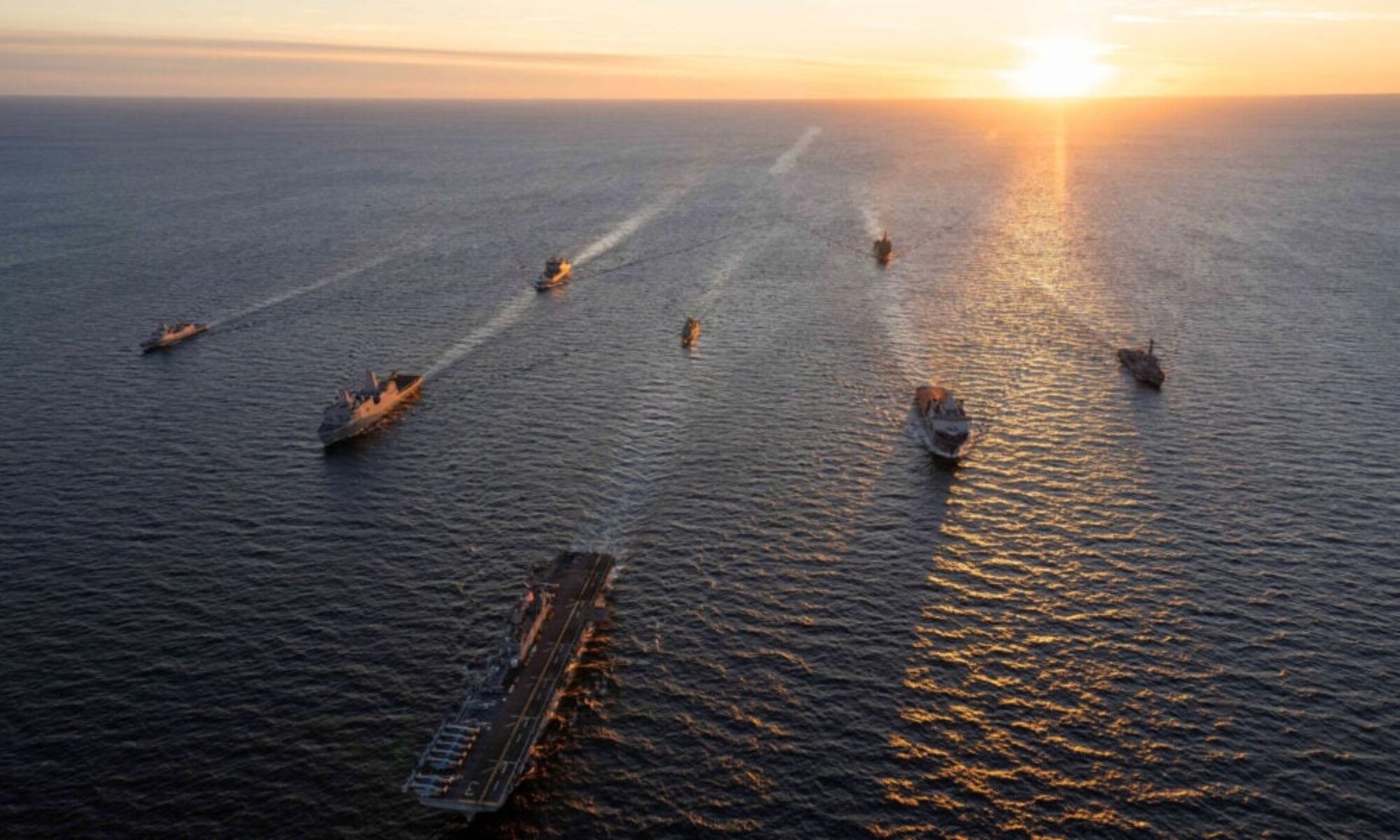
If Australia is vulnerable, what does that mean for America?

In a recent article for The Australian, Jennifer Parker—an expert associate at the National Security College, Australian National University, and an adjunct fellow in naval studies at the University of New South Wales Canberra—examined China’s latest naval maneuvers near Australia. Her analysis sheds light on vulnerabilities that should concern not just Australia, but the United States as well.
A stark reality: China’s naval task force is actively testing Australia’s response—militarily, politically, and diplomatically. A Chinese fleet operating near Australia’s waters isn’t just a message to Canberra; it’s a signal to the world that Beijing is expanding its reach.
For Americans, this should be a wake-up call. Australia, a key U.S. ally, has long enjoyed security from major conflicts. Yet, China’s maneuvers off its coast expose vulnerabilities in a way that should concern every nation reliant on maritime security, global trade, and naval power.
If China can challenge Australia’s sovereignty at sea today, what stops it from doing the same to America and its allies tomorrow?
China’s Strategy: Testing and Expanding
The deployment of a Chinese naval task group so close to Australia is no accident. It follows a pattern:
- Probing reactions. Just as it has done in the South China Sea, the Taiwan Strait, and Latin American ports, China is assessing how the world will respond to its growing military presence.
- Disrupting global security norms. Conducting live-fire drills near civilian air routes, refusing to issue proper warnings, and testing defense response times all serve a greater goal—normalizing an expanded Chinese naval footprint.
- Challenging the free world. This is about more than Australia. China is signaling that it has the capability—and the intent—to pressure democratic nations and reshape global power structures in its favor.
This matters to the United States because we rely on the same global shipping lanes, trade networks, and security partnerships that China is testing right now.
Lessons for the U.S. Navy and America
Jennifer Parker’s article points out an uncomfortable truth: Australia’s navy is struggling to meet growing demands. Its limited number of warships, outdated replenishment capabilities, and defense spending shortfalls are now under the spotlight.
But let’s not pretend this problem is unique to Australia.
- The U.S. Navy is stretched thin. With growing commitments in the Indo-Pacific, Middle East, and beyond, America is already balancing a smaller fleet against greater global threats.
- Shipbuilding capacity is a bottleneck. While China launches warships at record speed, the U.S. struggles to maintain its current fleet.
- Defense funding debates mirror Australia’s. At just 2% of GDP, U.S. defense spending is below Cold War levels, and ship procurement continues to face budgetary and political hurdles.
Australia’s vulnerabilities should be a case study for the United States. If a key U.S. ally is struggling to keep pace with China’s naval expansion, America cannot afford to take its own naval dominance for granted.
What Needs to Happen Next?
The right response is not panic—it’s preparation. America must learn from Australia’s situation and take the following steps:
- Increase Naval Readiness
- The U.S. must expand and modernize its fleet, ensuring it has the ships, submarines, and logistical support needed to deter threats.
- Fleet maintenance and shipyard infrastructure must be prioritized so that existing assets remain operational.
- Strengthen Strategic Alliances
- The U.S.-Australia partnership is critical—joint naval exercises, intelligence sharing, and strategic basing agreements must be expanded.
- Coordination with Japan, the Philippines, India, and other Indo-Pacific allies must also be reinforced.
- Engage the American Public
- Most Americans aren’t aware of how dependent the U.S. economy and security are on naval power.
- China isn’t just flexing its military strength—it’s waging a long-term strategic contest to control global trade, technology, and resources.
- If we don’t educate and rally support for a stronger Navy now, we risk falling behind when it matters most.
Final Thought: A Call to Action
Australia is waking up to the reality that it must invest in naval power to protect its interests. America should take this moment to do the same.
We don’t need alarmism. We need action.
The choice is simple: Invest in a stronger Navy today, or risk facing a crisis tomorrow.


